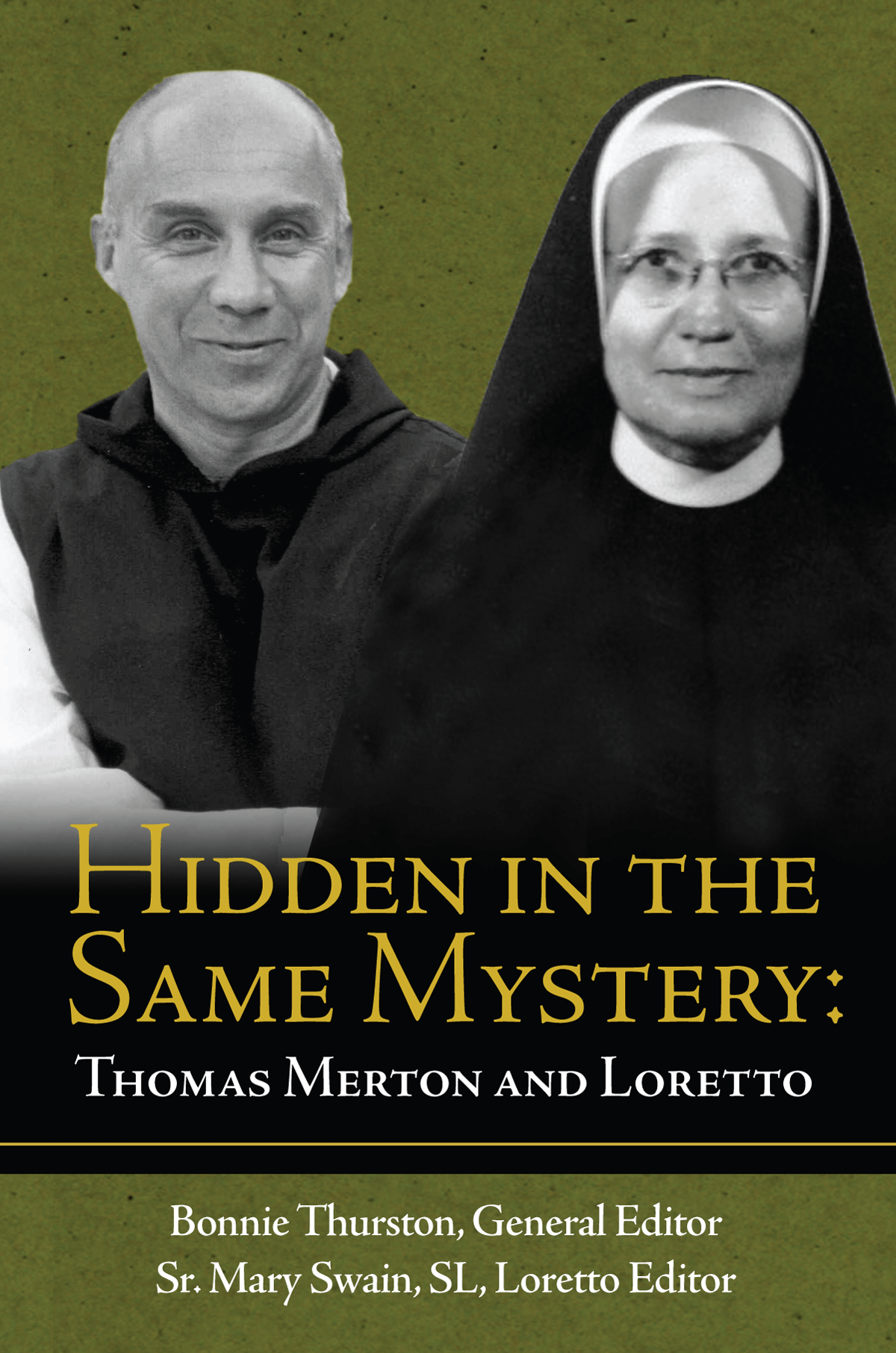From talks Merton gave at the Loretto Motherhouse, Hidden in the Same Mystery presents previously unpublished materials on his thinking on prayer and on religious life.
Hidden in the Same Mystery
Thomas Merton and Loretto
(book)
Prayer and Commitment in Thomas Merton
A Talk by Sister Mary Luke Tobin
(audio CD)
This short book traces the relationship between Thomas Merton and the Sisters of Loretto by presenting a series of short talks that Merton gave to the young Sisters at their motherhouse which was just down the road from Gethsemeni, Merton’s Trappist monastery in Kentucky. It then presents another series of talks about Merton’s ideas by Mary Luke Tobin who at the time of Merton’s visits to Loretto was Mother General and who later established The Thomas Merton Center for Creative Exchange in Denver.
The book is about the relationship between Merton and Luke during their years in Kentucky, later when she was one of the very few Catholic women officially to participate in Vatican II, and even after Merton’s sudden death in 1968. A beautiful composite picture of the two in their traditional religious garb graces the book’s cover and a number of pictures of them together illustrate the text. In a deeper sense, the book is about bringing a life of contemplation to active involvement for justice and peace in the contemporary world – what contemporary theologians are calling the necessary relationship of the mystical with the prophetic or political. Merton’s talks to the young sisters and Luke’s talks about Merton all focus on prayer as the core and center of a life following Christ in service to this world. Finally, the book ends with a lengthy section of photographs celebrating not only Luke, but many other Sisters whose “faces of wisdom” present “a portrait of Loretto.”
For those already familiar with Merton’s writings, this book will simply add some important biographical information about his relationship with Luke and other SL’s. For me, it confirmed the sense of Merton’s thought about prayer which I had recently rediscovered while reading Chris Pramuk’s new book on Merton (reviewed below). The liberating center of Merton’s ideas about prayer can be summarized in the following citation from his 1963 talk to postulants and novices: “The first reality you’ve got is yourself, and that’s where prayer begins…. You don’t have to go from you to God, because God is in you. All you’ve got to do is stay where you are. You don’t have to get out of this base earthly being that you are and climb Jacob’s ladder to the heavens…. You have to start where you are and stay with it because [God] is in you as you are….” One of Luke’s later talks about Merton is titled “Merton on Prayer: Stay Where You Are.” Here’s how she puts the idea at another place: “[God] doesn’t expect you to be any other than you are, except for the change that God is going to bring about in you.” And later she cites Merton’s last words to Asian monks and nuns in Bangkok just before he died: “I think today it’s more important for us to let God live in us so that others may feel God and come to believe…because they feel how God lives in us.”
The fuller meaning of these ideas about prayer and life in this world are somewhat unpacked in the talks presented in this book, and even more by the in-depth commentary provided by Chris Pramuk’s book. For me personally, though, this book was a lovely reminder of Luke’s gentle but always vital presence. She was for me, and for so many others, one of those in whom I could feel God’s presence because of who she was, because of the joy and liveliness and gentle persuasion of her presence. She not only was for us in Denver one of the heroes and leaders of the post-Vatican II church in this country. Much more, she was one of the saints who tried to show us how to open ourselves to the presence and power of God by being and becoming today who and what we already fully are.
Thus while I welcome and recommend this book about Merton and Loretto, it only whets my appetite for the fuller biography of Luke being written by her long-time companion Cecily Jones, SL, who was for years a regular contributor to Leaven.
Merton and Luke – Loretto and Gethsemani
by John F. Kane
